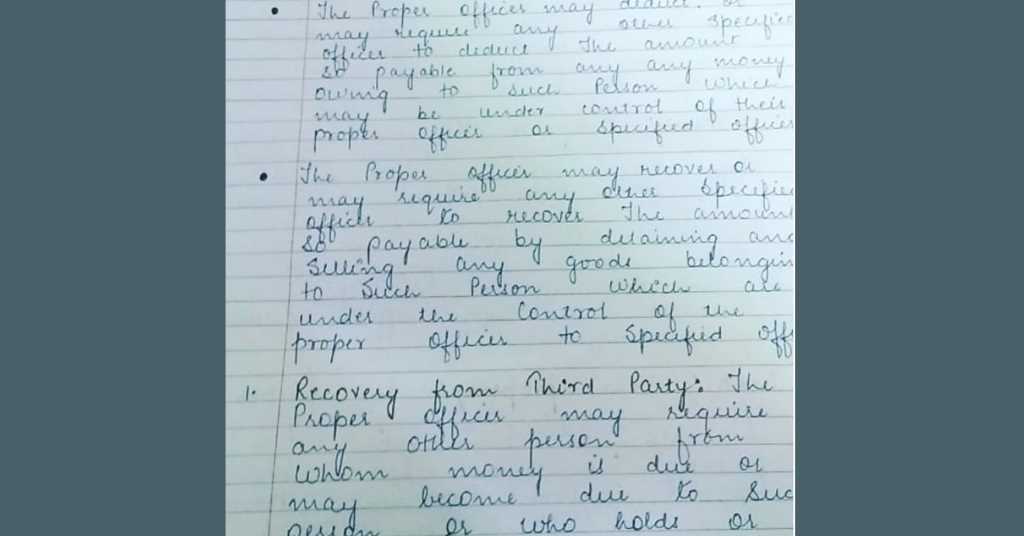
In any academic test, presenting your thoughts clearly and logically is key to achieving high marks. It’s not just about knowing the content but also about demonstrating your understanding in the most efficient way possible. Organizing your responses in a structured manner will allow examiners to easily follow your reasoning, ensuring they can assess your knowledge accurately.
Every section of a paper requires a distinct approach. Some questions may demand brief responses, while others require detailed explanations. Regardless of the complexity, maintaining clarity and precision will always be important. Time management and logical flow of information are essential elements to ensure you cover everything effectively within the allotted time.
Focusing on essential points, using relevant examples, and avoiding unnecessary information are just a few of the strategies that can help improve your performance. In this guide, we will explore various techniques that can elevate your exam technique, ultimately helping you achieve the best possible results.
How to Write Answers in CBSE Board Exams

In any academic assessment, clarity and coherence are critical to success. A well-structured response not only showcases your knowledge but also helps the examiner easily navigate your thought process. The way you present information can make a significant difference in the marks you receive, even if you know the content well. Understanding the proper techniques and strategies will allow you to express your ideas effectively and within the given time frame.
Organizing Your Response
Each question should be tackled with a clear plan. Begin by reading the question thoroughly to identify the key points. Then, outline the most important concepts you need to cover, ensuring that your response is both concise and relevant. A strong introduction that sets the context, followed by a detailed yet focused body, and a brief conclusion will form a logical flow that is easy for the examiner to follow. Structure is the foundation of any strong response, and sticking to it helps in delivering a coherent and complete explanation.
Using Examples and Clear Language

To make your response more impactful, use relevant examples that support your argument or explanation. Whether it’s a scientific concept or a historical event, illustrating your points with concrete examples helps demonstrate a deeper understanding of the material. Additionally, it is essential to avoid unnecessary jargon and complex language. Keep your language simple and direct, ensuring it remains accessible while still showcasing your knowledge. Clear, straightforward communication often makes a greater impact than overly elaborate language.
Understand the Question Format
Before attempting to respond to any query, it is essential to fully grasp its structure and requirements. Each question is designed to assess specific knowledge, and understanding its format will help you allocate your time and energy efficiently. Misinterpreting a question can lead to incomplete or irrelevant responses, which can affect your overall performance. Familiarity with the format allows you to tackle the question with confidence and accuracy.
Different types of questions require different approaches. Recognizing the format will help you focus on what is being asked and how to organize your response effectively. Below are common types of questions you might encounter:
- Direct Questions: These often seek a clear and concise explanation. Focus on answering exactly what is asked, without straying into unrelated details.
- Descriptive Questions: These require a more detailed response. Break down the topic into sub-sections and cover each part methodically.
- Application-Based Questions: These test your ability to apply theoretical knowledge to practical scenarios. Provide examples that demonstrate your understanding.
- Long Answer Questions: These often involve multi-step reasoning. Start with a clear introduction, followed by well-organized content, and end with a brief summary.
- Multiple Choice or Short Answer: These questions are straightforward but require precision. Ensure you answer directly, without adding unnecessary information.
By recognizing the question type, you can structure your response in a way that directly addresses the examiner’s expectations, ensuring clarity and completeness in your response.
Plan Your Time Wisely
Effective time management is a crucial element in any test situation. Allocating the right amount of time to each question allows you to cover all topics without feeling rushed. Without a clear plan, it’s easy to spend too much time on one section and leave others incomplete. By organizing your time in advance, you ensure that you can provide thoughtful, well-structured responses to every question.
One of the best ways to manage your time is by dividing it according to the marks allotted for each section or question. Start by allocating more time to questions that require in-depth explanations, and leave shorter questions for quick responses. Here are some strategies to help you plan your time effectively:
- Prioritize Difficult Questions: Tackle the harder questions first, while your mind is fresh. This will prevent you from rushing through them later when you’re more tired.
- Set Time Limits: Decide in advance how many minutes you should spend on each question or section. Keep an eye on the clock to ensure you’re on track.
- Leave Time for Revision: Make sure to save at least 10-15 minutes at the end for reviewing your responses and correcting any mistakes.
- Avoid Overthinking: Stick to your plan and avoid spending too much time on any single question. If you’re stuck, move on and come back later if necessary.
By following these strategies, you can make the most of the time available and ensure you complete the test with a well-rounded set of responses.
Structure Your Answer Clearly
A well-organized response ensures that your ideas are communicated effectively. Presenting your thoughts in a clear and logical order helps the examiner follow your reasoning and understand your grasp of the subject. A structured approach not only makes it easier for you to express your knowledge but also enhances the overall quality of your response. Keeping things concise and well-arranged ensures you cover all important points while avoiding unnecessary details.
One way to organize your thoughts is by following a simple structure that includes an introduction, body, and conclusion. The introduction should briefly outline the key points you’ll discuss. The body should elaborate on these points in a logical sequence, while the conclusion should summarize the main ideas and provide closure to your response.
| Section | Description |
|---|---|
| Introduction | State the key idea or concept, giving a brief overview of what will be covered. |
| Body | Elaborate on the main points, providing detailed explanations, examples, or evidence to support your answer. |
| Conclusion | Summarize the key points and provide a concise closing statement. |
By following this structure, you will ensure that each part of your response is logically connected and flows smoothly from one point to the next. This clarity helps convey your understanding in the best possible way.
Write Concisely and Stay Relevant
Effective communication is not just about providing information but delivering it in a clear and compact way. When responding to any question, it’s important to focus on the key points and avoid unnecessary details. Staying relevant ensures that every sentence adds value to your response, helping you make the most of the limited time available. Being concise allows you to cover all aspects of the topic without over-explaining or straying off-track.
Focus on Key Concepts

Identify the most important aspects of the topic and elaborate on them without going into excessive detail. A good answer is one that addresses the question directly, without adding any unrelated or tangential information. Clarity is essential, and staying focused ensures that your main argument or explanation is easily understood.
Avoid Repetition and Over-Explanation
While elaborating on concepts, avoid repeating the same information in different words. This only wastes valuable time and space. Instead, use clear, precise language to express your ideas, and always make sure that each sentence brings something new to your explanation. By keeping your response sharp and to the point, you’ll not only demonstrate your understanding but also leave a positive impression on the examiner.
Use Bullet Points When Necessary
Organizing information in a clear, concise format is key to making your response easy to read and follow. In some cases, breaking down complex ideas into simple, digestible points helps convey your thoughts more effectively. Bullet points are an excellent tool for presenting multiple pieces of information in a structured way, making it easier for the examiner to assess your knowledge quickly and accurately.
When to Use Bullet Points
Bullet points should be used when you need to list several related ideas, characteristics, or steps in a process. They help highlight key points without unnecessary elaboration, ensuring your response remains focused and easy to follow. Below are a few scenarios where bullet points can be helpful:
- Listing Features: When describing the characteristics or features of something, bullet points provide a clear and organized format.
- Steps in a Process: If the question asks for a sequence of actions or events, bullet points help in presenting them logically.
- Comparing Elements: When comparing multiple items, bullet points allow you to highlight the differences or similarities in an easily readable format.
How to Format Bullet Points Effectively

While bullet points can help make your response clearer, it’s important to use them properly. Keep each point brief, using clear and precise language. Avoid overcrowding the list with excessive detail–stick to the main points that directly address the question. Additionally, ensure that the points flow logically from one to the next to maintain coherence in your response.
Support Answers with Examples
Providing clear examples is an effective way to reinforce your understanding of a topic and make your explanation more relatable. Real-life or theoretical examples help to illustrate abstract concepts and demonstrate how they apply in practical situations. By including examples, you not only show your depth of knowledge but also make it easier for the examiner to follow your reasoning and see the relevance of your response.
Examples should be concise and directly tied to the point you are making. Avoid unnecessary elaboration or irrelevant details, as this could divert attention from the main topic. Whether you are explaining a scientific principle, a historical event, or a mathematical formula, an appropriate example can clarify your argument and strengthen your response.
| Example Type | Purpose |
|---|---|
| Real-World Example | Helps connect theoretical knowledge to everyday situations, making the concept easier to understand. |
| Theoretical Example | Demonstrates the application of a concept within the context of the subject’s principles or theories. |
| Case Study | Provides a detailed analysis of a specific situation, allowing deeper exploration of the topic in context. |
Incorporating relevant examples enhances the clarity of your explanation and demonstrates a deeper understanding of the subject. This approach helps to make your response more engaging and informative, leaving a positive impression on the examiner.
Maintain Proper Handwriting
Clear and legible handwriting plays a vital role in conveying your thoughts effectively. No matter how well you understand the topic, if the examiner cannot read your response, it may lead to confusion and a lower score. Taking the time to write neatly not only helps avoid misunderstandings but also leaves a positive impression on the evaluator.
Maintaining proper handwriting involves several key aspects that improve both readability and presentation. Below are some tips to ensure your handwriting is legible and structured:
- Write Neatly: Use clear and evenly spaced letters, making sure each word is distinct and easy to read.
- Use Consistent Size: Avoid writing too small or too large. Ensure that your handwriting is uniform throughout the response.
- Keep Lines Straight: Avoid slanting your writing. Keeping lines straight helps improve readability and presentation.
- Avoid Overcrowding: Leave enough space between words and lines so that the text does not appear cluttered.
- Use Correct Punctuation: Proper punctuation not only clarifies meaning but also makes the text more readable.
By focusing on neatness and legibility, you can make sure that your response is easy for the examiner to read and evaluate, which can positively influence the outcome. Remember, your handwriting is a part of the overall impression you make in any assessment.
Review and Edit Your Answer
After completing your response, it’s essential to take a moment to review and refine it. Rushed responses can sometimes contain mistakes or missed points that may affect your score. By revisiting your work, you have the opportunity to improve clarity, fix errors, and ensure that you’ve addressed every aspect of the question. A well-reviewed and edited response is more polished and effective in conveying your knowledge.
Steps for Effective Review

Follow these steps to ensure that your response is as accurate and well-structured as possible:
- Check for Clarity: Read through your response to ensure that each point is clear and easy to understand. Make sure your ideas are logically presented and connected.
- Correct Grammar and Spelling: Look for any spelling or grammatical mistakes that might distract from your content. These errors can negatively impact the readability of your response.
- Verify Key Points: Ensure you’ve covered all the major concepts required by the question. Make sure no important detail is left out.
- Ensure Relevance: Confirm that all information provided is directly related to the question. Remove any unnecessary content or off-topic details.
Final Touches
Once you’ve reviewed your response, take one last look for neatness and consistency. Ensure that your handwriting is legible and that your response is neatly organized. If you have time, read through the question again to confirm that your response fully answers it. A well-edited response not only improves the quality of your work but also leaves a positive impression on the examiner.
Stay Calm Under Pressure
During any high-stakes assessment, it’s easy to become overwhelmed by the pressure of time and the importance of your performance. However, maintaining composure is crucial for delivering your best work. Anxiety can cloud your thinking and reduce your ability to focus, making it harder to recall information and express yourself clearly. Staying calm allows you to think clearly, manage your time effectively, and approach each question with confidence.
One of the most important things to remember is that stress can be managed through practice and preparation. When you feel in control of your emotions, you are better able to assess each situation and respond logically. Here are some techniques to help you stay calm and focused during the test:
- Deep Breathing: If you begin to feel anxious, take a few deep breaths. This helps reduce tension and restores focus.
- Take Short Breaks: If allowed, take a brief moment to pause, close your eyes, and reset your mind before moving on to the next question.
- Maintain a Positive Mindset: Remind yourself that you are well-prepared and capable. A positive outlook can help reduce nervousness and boost confidence.
- Focus on One Task at a Time: Break down the assessment into manageable segments. Focus on one question before moving on to the next, rather than worrying about the entire paper.
By mastering the art of staying calm, you can approach each question with clarity and precision, ensuring the best possible outcome under pressure.
Focus on Key Concepts
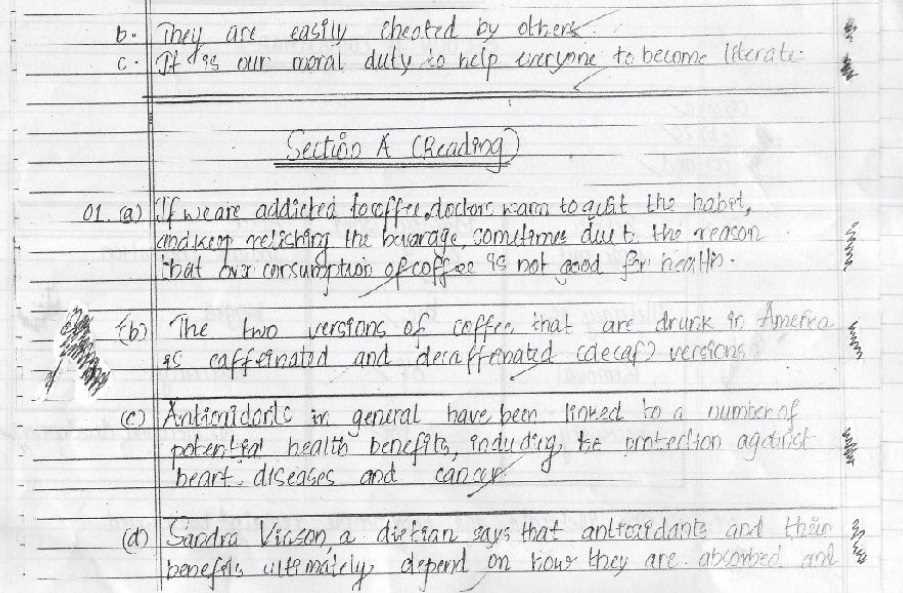
To effectively address any question, it’s essential to focus on the central ideas that directly relate to the topic at hand. Rather than getting caught up in minor details or trying to cover everything, honing in on the core concepts allows you to provide a concise, structured, and relevant response. By concentrating on the most important elements, you ensure that your explanation is both comprehensive and easy to understand.
Identify the Main Ideas
Before you begin your response, quickly identify the key points the question is asking you to address. Look for keywords and phrases that highlight the central theme. This will guide you in structuring your response around the main concepts, ensuring that your answer is both focused and on-topic.
Use Clear and Relevant Examples
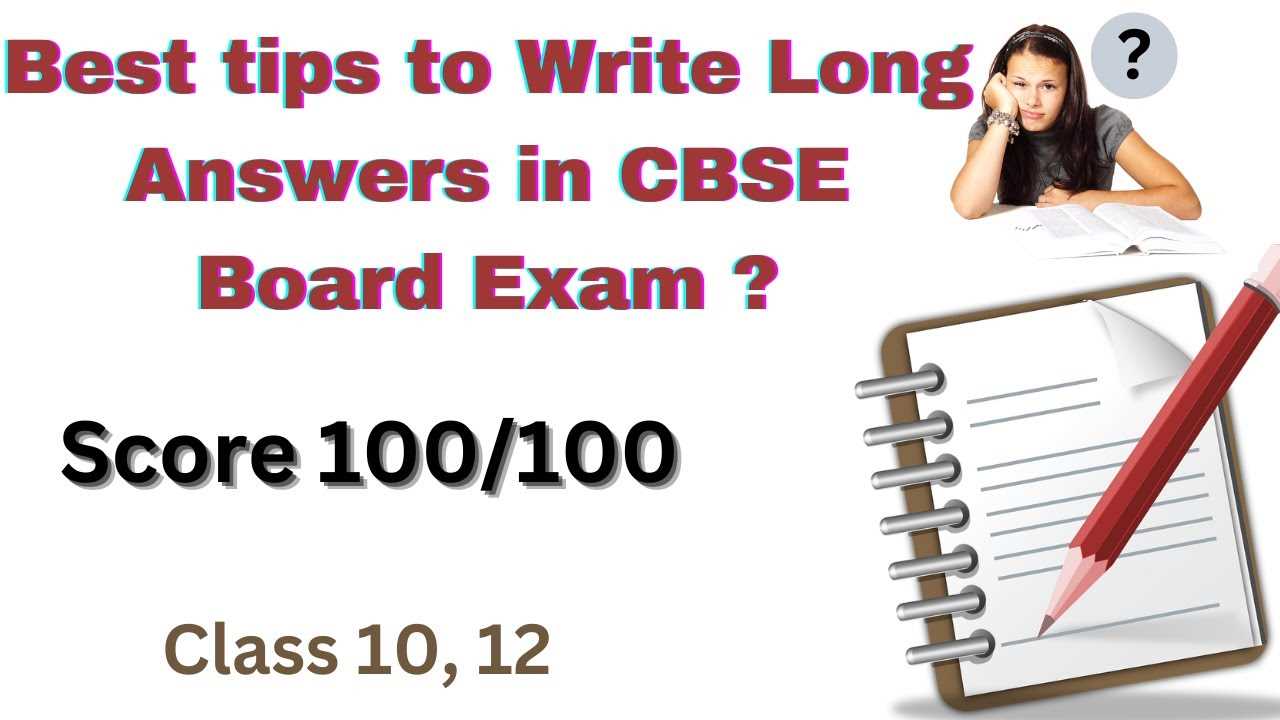
Once you have identified the key ideas, support them with clear and relevant examples. Using specific illustrations strengthens your explanation and demonstrates a deeper understanding of the subject. Avoid deviating from the main points to ensure that every example you provide directly reinforces the key concept.
Provide Accurate Definitions
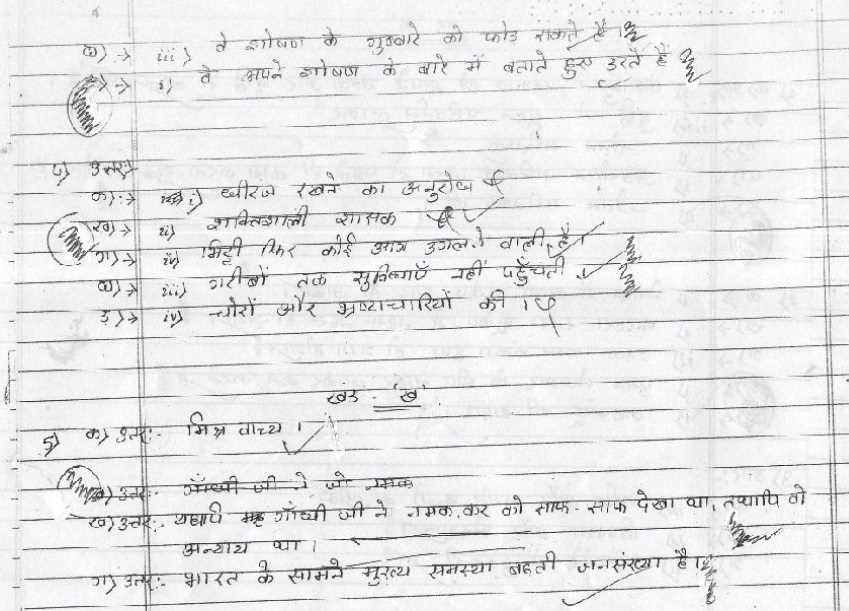
Accurate definitions are essential for demonstrating a strong understanding of key terms and concepts. A precise explanation helps the examiner grasp your knowledge clearly and ensures that you are addressing the core of the question. Defining terms correctly sets the foundation for your response and guides the rest of your explanation, making it easier to build upon your definition with further details or examples.
Ensure Clarity and Precision
When defining a term, make sure to use simple, unambiguous language that leaves no room for confusion. Avoid overly complex definitions or jargon unless it’s absolutely necessary for the subject matter. A clear definition not only helps in answering the question but also shows that you understand the term in its most essential form.
Provide Context Where Needed
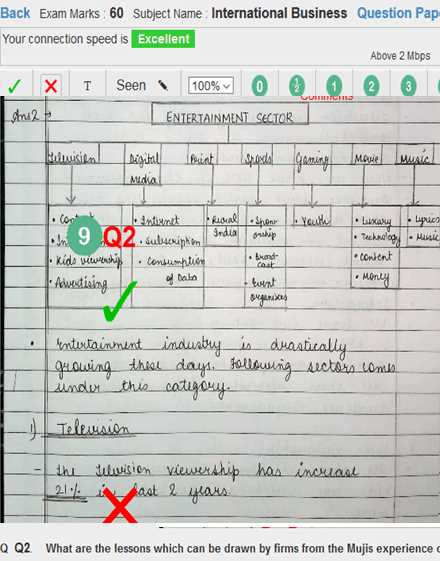
Sometimes, a term may require additional context to fully explain its meaning. In these cases, provide a brief explanation of how the term fits into the broader topic. This can help connect the definition to the larger concepts and demonstrate your deeper understanding of the subject.
Use Diagrams to Clarify Answers

Visual representations such as diagrams, charts, and graphs can be powerful tools to enhance your response and provide clarity. Sometimes, complex concepts or processes are easier to understand when illustrated. Diagrams not only break down difficult ideas into simpler components but also give the examiner a clearer picture of your understanding, making your explanation more effective and memorable.
When to Include Diagrams
Diagrams are especially useful when dealing with topics that involve processes, structures, or relationships. For example, when explaining the lifecycle of a plant, the flow of a chemical reaction, or the anatomy of a system, a well-drawn diagram can effectively demonstrate the key points. It also helps to include a diagram when the question specifically asks for one, or when you believe a visual representation will make your response more accurate and precise.
Tips for Effective Diagrams
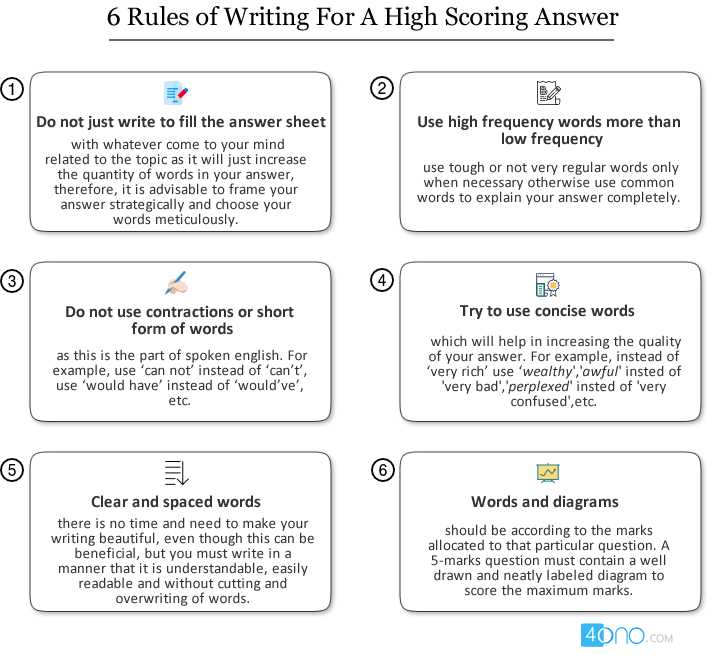
- Keep it Neat: Ensure that the diagram is clear, properly labeled, and free from unnecessary details that could distract from the main points.
- Label Clearly: Make sure to label all parts of the diagram correctly. Use legible handwriting for labels to avoid confusion.
- Use Simple Shapes: Avoid overly complex diagrams. Simple shapes and lines will make your diagram easier to understand.
- Provide Explanation: Briefly explain the diagram in the accompanying text to link it with the rest of your response and reinforce its relevance.
Incorporating diagrams into your response can demonstrate your ability to convey complex information in a more digestible way, leaving a stronger impression on the evaluator.
Be Careful with Technical Terms
Using technical terms in your response can greatly enhance the quality of your explanation, but it’s important to apply them accurately. Misusing or overcomplicating specialized terminology can confuse the examiner and lead to misunderstandings. It’s essential to ensure that the terms you use are correct and relevant to the context of the question, as well as understood by the reader in the way you intend.
Understand the Terminology
Before using any technical terms, make sure you fully understand their meaning and how they relate to the subject. It’s important that the term is used in the correct context and conveys the precise concept you want to express. If you’re unsure of the meaning of a term, it’s better to describe the idea in simpler words rather than risk using it incorrectly.
Use Simple Alternatives When Possible
When appropriate, consider using simpler language to convey the same idea. While technical terms may be necessary in some cases, clarity should always come first. If you find that a specialized term could confuse the reader or isn’t crucial to your explanation, try to replace it with a more general description that gets the point across without unnecessary complexity.
Highlight Important Information

Focusing on the most critical details allows the reader to grasp key points efficiently. Emphasizing significant concepts ensures that the central message is clear and that no important information is missed. By presenting these elements in a structured manner, it becomes easier for the audience to process and retain essential facts.
One effective way to highlight important information is by using organized formats, such as tables. This not only separates key details but also makes it easier for the reader to quickly identify what is most relevant. Below is an example of how you can structure important points clearly:
| Topic | Key Points |
|---|---|
| Cell Structure | Cell membrane controls movement of substances, while the nucleus contains genetic material. |
| Newton’s Laws | Inertia explains objects in motion, and force determines the acceleration of objects. |
| Global Warming | Carbon dioxide is a major greenhouse gas, contributing to the rise in global temperatures. |
Using tables like this helps break down complex information into digestible pieces. It keeps the focus on what truly matters, making it easier to understand and recall the most relevant concepts.
Follow the Word Limit Guidelines

Adhering to word count restrictions is essential for effective communication, as it ensures clarity and precision. By sticking to the specified limit, the content remains focused and avoids unnecessary elaboration. This approach not only saves time but also makes it easier for the reader to process the information quickly.
Why it is important to follow word limits
- It helps in organizing thoughts and presenting them concisely.
- It prevents irrelevant details that can distract from the main point.
- It ensures that the response fits within the expected framework, making it easier for the reader to assess the information.
- It allows you to manage your time efficiently, particularly in situations where multiple responses are required.
Tips for staying within the word count
- Prioritize key points: Focus on the main ideas and avoid over-explaining details.
- Use bullet points: List important information in a clear and compact form.
- Avoid redundancy: Ensure that each word or sentence contributes meaningfully to the response.
- Edit your work: After writing, review the content to eliminate any unnecessary words or phrases.
By following these guidelines, you can present your information effectively within the given constraints, ensuring that every word counts.